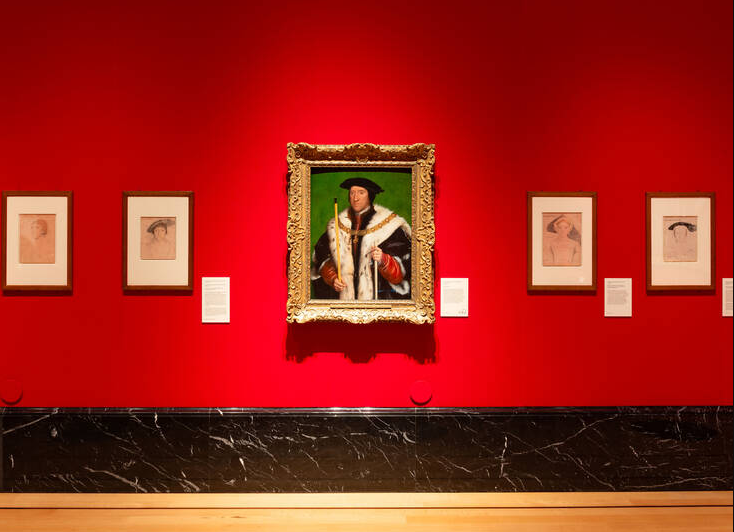Evolution of Art Exhibitions: A Journey Through Time

Art exhibitions have long been a cornerstone of the art world, providing a platform for artists to showcase their works and allowing audiences to engage with a wide array of artistic expressions. The historical development of art exhibitions reflects the evolving nature of art itself, as well as changes in society, culture, and technology. In this article, we will take a deep dive into the fascinating journey of art exhibitions, from their modest origins to the grand spectacles we witness today.
The Dawn of Art Exhibitions: A Humble Beginning
Art exhibitions can trace their roots back to ancient civilizations, where art was often displayed in communal spaces or religious settings. In ancient Egypt, for instance, artwork was showcased in temples and tombs, serving both aesthetic and ritualistic purposes. Similarly, ancient Greece featured art exhibitions during festivals, where sculptures and paintings were displayed in public spaces for all to admire.
Fast forward to the Renaissance period in Europe, and we witness a significant shift in the concept of art exhibitions. During this era, artists began to gain recognition as individuals, and their works were exhibited in private galleries or sponsored by wealthy patrons. These early exhibitions paved the way for the democratization of art, allowing a broader audience to appreciate and critique artistic creations.
The Salon System: Establishing a Tradition
The 17th and 18th centuries saw the emergence of the Salon system in France, which became a model for art exhibitions worldwide. The Royal Academy of Painting and Sculpture organized the first official Salon in 1667, setting the stage for subsequent exhibitions in the years to come. These exhibitions were pivotal in determining an artist’s success and reputation.
The Salon exhibitions played a crucial role in shaping the art world by establishing certain artistic norms and trends. However, they also faced criticism for their exclusivity and adherence to established conventions. Nevertheless, they marked a significant milestone in the historical development of art exhibitions by providing a platform for artists to gain recognition and financial support.
Modernizing Art Exhibitions: The Rise of Public Museums
The 19th century witnessed a transformation in the way art exhibitions were organized and accessible to the public. Public museums and galleries began to emerge, making art more readily available to a broader audience. The Louvre Museum in Paris, founded in 1793, is a prime example of this shift towards democratizing art.
The idea of a permanent collection open to the public gained momentum, allowing art lovers to engage with masterpieces from various cultures and time periods. Museums also played a vital role in art preservation, ensuring that artworks were safeguarded for future generations.
20th Century and Beyond: Experimentation and Innovation
The 20th century marked a period of experimentation and innovation in the world of art exhibitions. Avant-garde movements like Surrealism, Cubism, and Abstract Expressionism challenged traditional artistic norms, leading to exhibitions that pushed boundaries and redefined the art-going experience.
Art exhibitions became more immersive and interactive, with artists exploring new mediums and materials. Installations, performance art, and multimedia presentations added layers of complexity to the art world, challenging audiences to engage with art on a deeper level. Notable exhibitions like “The Armory Show” in 1913 introduced American audiences to modern European art, sparking debates and discussions that shaped the course of art history.
The Digital Age: Art Exhibitions in the 21st Century
In the 21st century, technology has revolutionized the way we experience art exhibitions. The advent of the internet and digital platforms has expanded the reach of art, allowing people from all corners of the globe to explore exhibitions virtually. Online galleries, virtual reality tours, and digital art installations have become common, bridging geographical gaps and democratizing access to art.
In recent years, the COVID-19 pandemic accelerated the adoption of virtual art exhibitions, making them an integral part of the art world. Online platforms have become indispensable for artists, galleries, and museums to connect with their audiences during times of social distancing.
Contemporary Insights on Art Exhibitions
Staying informed about the latest trends and dialogues in the art exhibition realm is crucial for those interested in the contemporary art scene. Articles about exhibitions serve as a rich repository of information. They encompass everything from critiques of ongoing shows to explorations of new tendencies in the art sphere, offering essential insights for both art aficionados and industry experts.
Conclusion
The historical development of art exhibitions reflects the evolving nature of art, society, and technology. From humble beginnings in ancient civilizations to the grand spectacles of the digital age, art exhibitions have continuously adapted to meet the changing needs and expectations of audiences. Today, they continue to play a pivotal role in shaping our understanding and appreciation of art, making it accessible to all who seek to engage with the world of creativity and expression.





